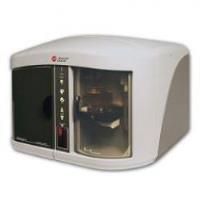 Add My Company
Add My Company
Sign In

The concentration of non-degradable plastic products in the world?s oceans is impossible to accurately quantify, but localized research indicates that plastic pollution levels are currently vastly underestimated. These approximations account for polymer-based products from macro- to micro-scales, with emerging research focusing increasingly on the dangers presented by microplastics.
Microplastics are tiny polymer particles that have either broken down from larger products such as plastic bags and bottles, or have been manufactured on a deliberately small scale. Microbeads are perhaps the most recognized form of microplastic, which have been used in numerous health products including toothpaste. These are notoriously pollutive, passing through water treatment processes and detrimentally impacting marine environments. While microbeads are now commercially banned worldwide, microplastic particles continue to damage oceanic ecosystems today. As much as 40 billion plastic particles were washed into the North Sea in a single event of flooding.
While a true global assessment of microplastic pollution cannot be carried out, measuring the particle concentration of pollutive polymers in localized areas can inform worldwide studies into the scale of the problem.
Measuring Particle Concentration of Microplastics
Microplastics are characterized as polymer fragments that are less than 5 mm in length. They can easily be detected and quantified by particle concentration analyzers, which can count particles in liquid samples with size ranges from the nanometer scale upwards. Multiple water samples can be tested to ascertain the concentration levels of microplastics in rivers and oceans, and to characterize how microplastics propagate when dispersed in the environment.
Sediment particle concentration is also used to detect the presence of microplastics on beaches and in river estuaries. These studies can help researchers track plastic pollution and determine how much microplastic is being washed up through tidal displacement. There are robust figures detailing how much plastic is dumped into the ocean every year, with estimates suggesting there are over 270,000 tons of polymer products floating on the surface. Striking images have also shown macro-plastic products attached to coral reefs, on the seabed, and floating as low as the Mariana trench. While shocking, these images cannot capture the problems associated with much smaller particulates, which are also much harder to track. Researchers must estimate our oceans? microplastic levels from particle concentration studies comparing sediment analysis to seawater analysis.
Why Measure Particle Analysis of Microplastics?
Microplastics are small enough that many animals including fish and birds mistake them for food. This can immediately impact marine ecosystems, as microplastics have been observed carrying harmful substances, thus acting as contaminant vectors. Further research is required to determine the impacts of microplastics within the food chain, and particle concentration analysis is one of the leading contributing methods of establishing a deeper understanding of microplastic pollution.
Particle Concentration Analysis from Meritics
Meritics is a leading supplier of outstanding particle characterization instruments for numerous fields of research and application. Our particle concentration analyzers include the Multisizer 4e, which can provide particle mass, size, and distribution analysis from a single liquid sample measurement.
For more information on Particle Concentration Analysis of Microplastics talk to Meritics Ltd
Enquire Now
More News
List your company on FindTheNeedle.

